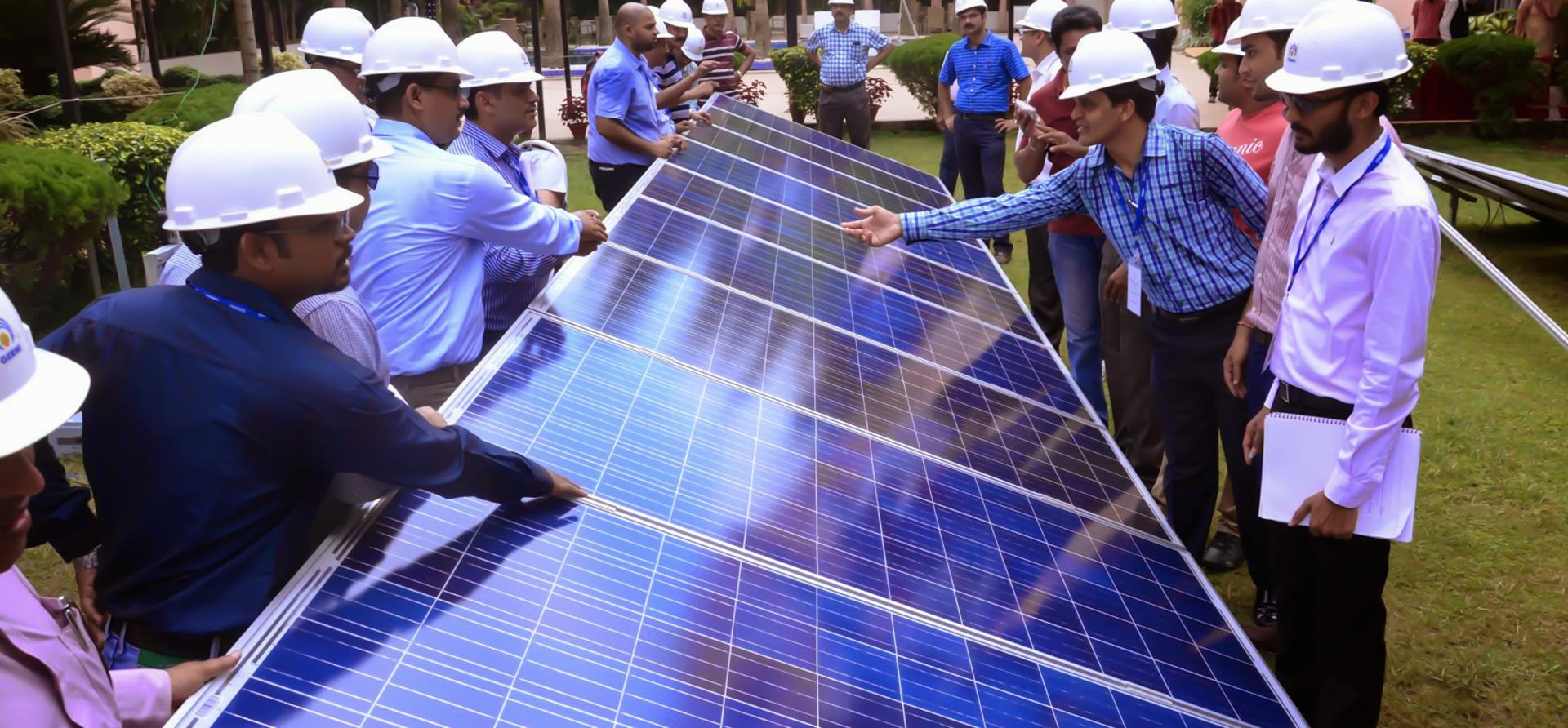How import restrictions on modules will push up solar energy tariffs in India

At the COP26 summit, India set the longer-term goal of cutting its emissions to net zero by 2070. One near-term target by which the Indian government aims to achieve this larger nationwide objective is installation of 500 gigawatts (GW) of non-fossil fuel based energy capacity by 2030. Of this, about 300GW is expected to be from solar only. India’s installed solar power capacity increased from ~0.2GW in 2010 to ~54GW as of March 2022.
Falling solar tariffs are driving solar installations in India.
Falling solar tariffs are driving solar installations in India. Utility-scale solar tariffs have fallen steeply – by 82% from Rs10.95 per kilowatt hour (kWh) in 2010 to Rs1.99/kWh in 2020 – largely driven by reduced solar module prices. Technological advancement of solar photovoltaics (PV) and economies of scale have triggered, and sustained, the downward pressure on module prices.
Against the trend, in mid-2020, module prices began increasing globally. The price of solar (monocrystalline passivated emitter and rear contact type, commonly termed mono PERC) modules jumped by ~38% between August 2020 and March 2022, key factors being the lack of supply of commodities (polysilicon, glass, copper silver etc) and a surge in freight charges.
Beyond module price hikes, further contributors to the overall short-term inflation of Indian solar tariffs include the surge in demand for electricity and renewables in the post-pandemic world, the hike in goods and services tax (GST) rates on solar cells, modules and inverters from 5% to 12%, as well as the rising insurance cost for solar projects.
The average of winning solar tariffs discovered between January 2021 and March 2022 is Rs2.48/kWh. This is about ~25% higher than the record low solar tariff of Rs1.99/kWh in December 2020.
The main factor contributing to further increases in tariffs is the basic customs duty (BCD), applicable from 1 April 2022, of 25% on imported cells and 40% on imported modules. To avoid this, most developers stockpiled imported supplies in Q1 2022 for projects expected to be commissioned this year.
Another major challenge for developers is the Approved List of Models and Manufacturers (ALMM), implemented from 1 April 2022, which mandates the type and source of solar modules to be used for projects under central and state government contracts. The list comprises models and manufacturers of modules (“Solar Photovoltaics, Systems, Devices and Components Goods”) certified by the Bureau of Indian Standards (BIS).
ALMM covers only domestic solar modules, excluding Chinese modules – which account for about 70-80% of all solar installations in India so far. The 14GW of manufacturing capacity (the majority of which is based on outdated multi-PERC technology) listed in ALMM by April 2022 will not be able to meet total market demand.
The approved list also presents a challenge for developers to source high-efficiency, higher-wattage modules (greater than 600 watts peak, or Wp) in India. The lower generation capacity of the older technology modules will make it challenging for developers to sustain bidding of aggressive tariffs.
In the short-term, it is expected that factors such as BCD and ALMM will sustain high domestic module prices, and so have an adverse impact on future utility-scale solar tariffs.
Even if developers employ stockpiled BCD-free imported modules, JMK Research anticipates solar project auctions will witness a tariff hike of ~22% above the record-low tariff in the near term to reach Rs2.43/kWh (US$0.0323/kWh).
In the case of a project for which the developer procures domestic modules by Q1 2023, tariffs are likely to be only 14% higher than the record-low solar tariff. For developers depending on imported modules, the tariffs are expected to be ~48% more (due to module price inflation, BCD, GST rate hike etc).
Stronger downward pressure on future solar tariffs needs innovative solutions.
Stronger downward pressure on future solar tariffs needs innovative solutions. To meet the 500MW target, renewable energy stakeholders must encourage financial, technological and regulatory advances in the solar industry.
Low-cost, long-term finance is key for accelerating RE investments. Critical instruments for low-cost financing and consequently lower tariffs include overseas green bonds, non-convertible debentures (NCD) and infrastructure investment trusts (InvITs) among others.
Technology also plays a major role in maximising plant output. Where a developer opts for bifacial modules with single-axis tracker, achieving a gain of ~4-5% in capacity utilisation factor (CUF) can partly compensate for the higher project cost.
To bring down tariffs, it is also important to address and mitigate the overall project risk. Future projects face immense risk from commodity price volatility, currency fluctuation and uncertainties related to BCD and ALMM.
To resolve the risk, it is imperative that India implements clear and consistent solar policies, especially on import restrictions.
This commentary was first published by Renewable Watch















